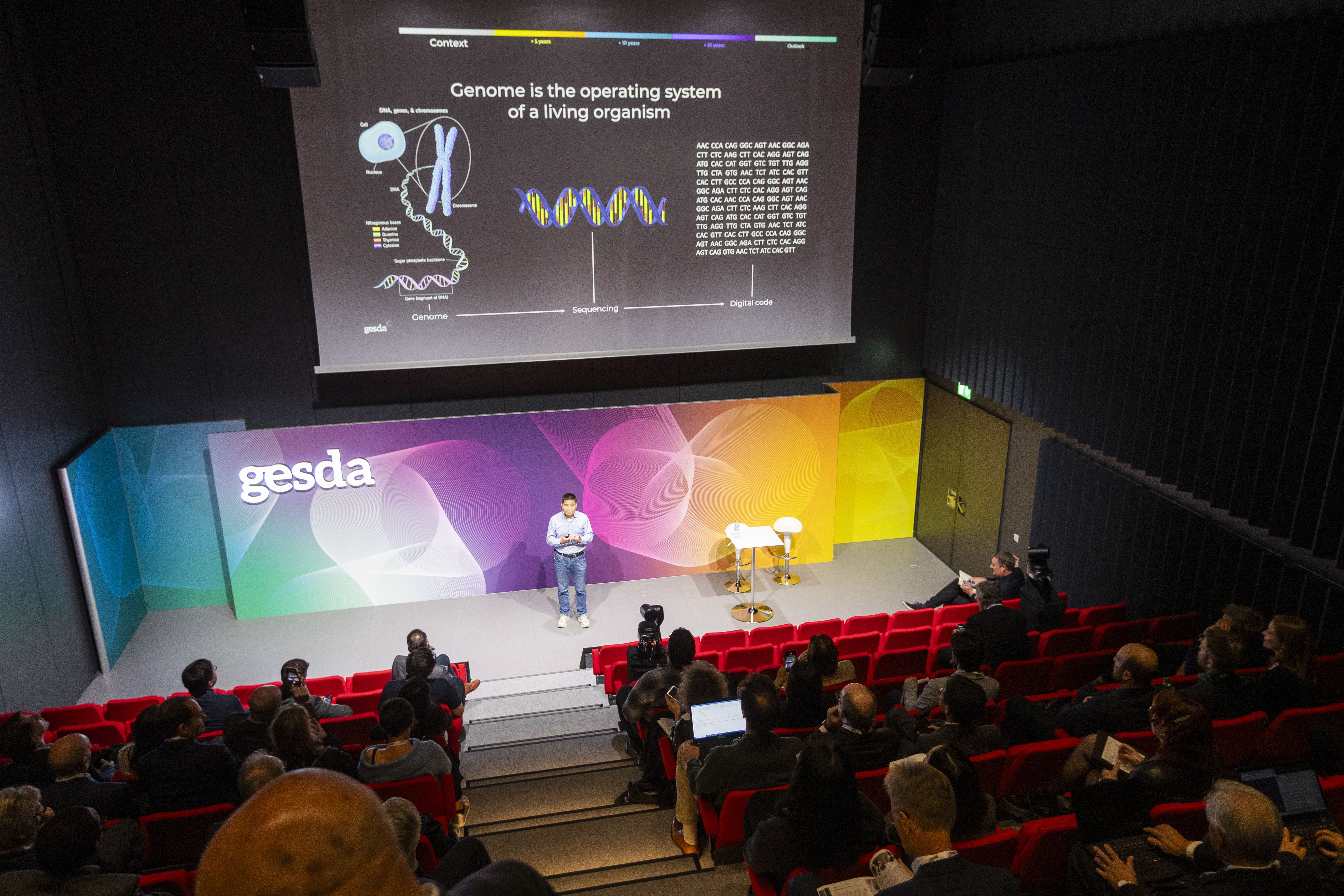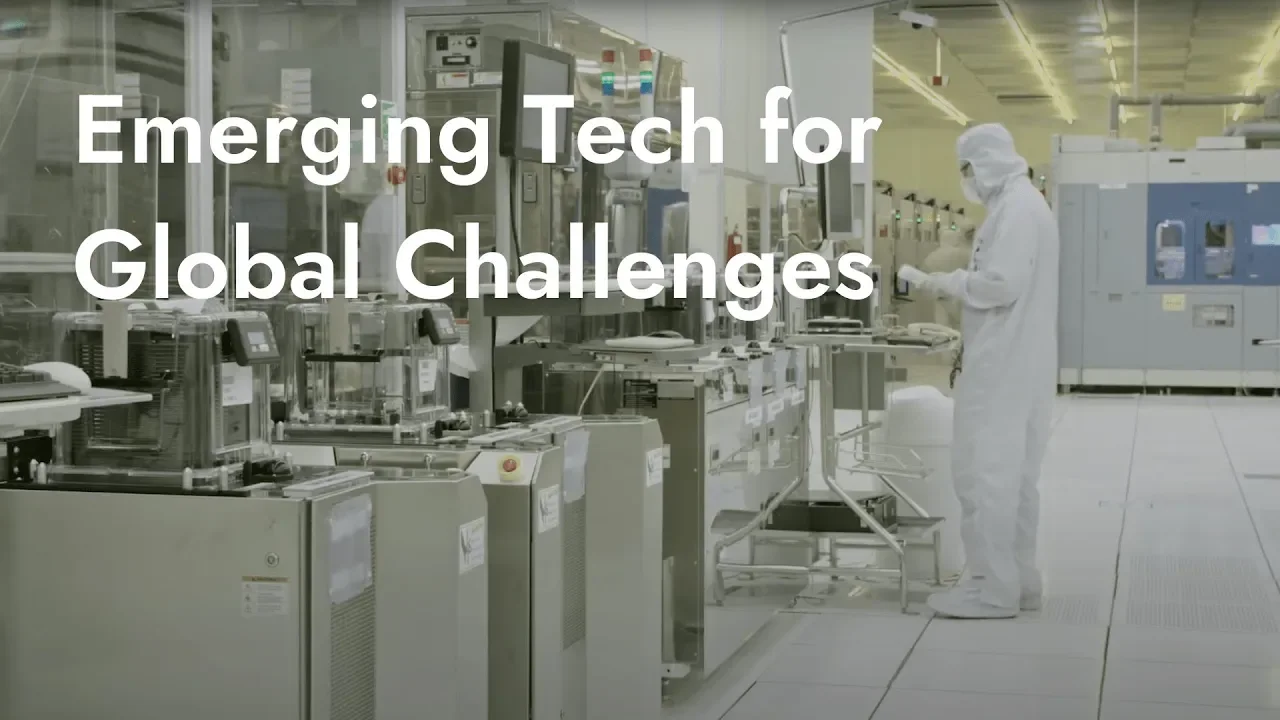This session’s speaker delivered a compelling presentation on how synthetic biology is pushing the boundaries of biotechnology. He highlighted groundbreaking advances and raised ethical questions about the potential for synthetic biology to reshape everything from medicine to environmental management.
The following is the rapporteur report of an expert discussion held during the 2024 GESDA Summit. The author is a Villars Fellow.
Ideas from the Speakers
The Evolution of Genome Sequencing
The expert set the scene by mentioning the Human Genome Project, which, after a staggering 15 years and $3 billion in funding, was completed by a global team of around 1,000 scientists. This monumental achievement opened the door to our understanding of DNA as the “operating system” of living organisms, enabling us to begin reading and interpreting genetic codes. Since then, technology has advanced at an unprecedented pace, with the MGISEQ-T7 (a small, fast DNA sequencing machine) now capable of sequencing 10,000 human genomes per year at a fraction of the initial cost. DNA sequencing costs have plummeted, from millions per genome in 2001 to mere hundreds today, which the speaker suggested will expand access to personalized medicine and disease risk prediction worldwide.
Moving from Reading to Writing the Genome
The speaker’s talk transitioned to synthetic biology’s next big goal: genome writing. While DNA sequencing allows scientists to read genetic information, genome writing enables them to “rewrite” it, potentially allowing us to reprogram life forms. Using CRISPR and other gene-editing tools, scientists are now looking beyond editing small sections of DNA to fully reprogramming genomes. The expert shared astonishing examples: engineered microbes that produce biofuels, plants with optimized photosynthesis, and organisms created to remediate environmental damage. This is no longer science fiction; organisms designed with specific tasks are closer than ever to being a reality.
Synthetic Biology Applications: Current and Future Horizons
The speaker described Syntrichia caninervis, a desert moss with uniquely efficient photosynthesis. Scientists hope to engineer plant genomes to mimic this plant’s drought resilience, paving the way for crops that can withstand climate extremes. He outlined a timeline of development, envisioning a future where, in as little as five years, synthetic crops could resist drought, floods, and even new pests, solving critical food security issues. He explained that synthetic biology could have applications far beyond agriculture and hinted at the revival of extinct species like the Yangtze River dolphin. Other applications include synthetic microbes that produce medicines and natural compounds, or assist with environmental remediation, such as oil spill cleanup. The expert underscored that these organisms would be engineered to operate within a carefully designed genetic framework, potentially reducing the need for harmful chemicals and pharmaceuticals. The session conveyed a sense of urgency as he addressed the gaps that must be filled, particularly in the recurring theme of the GESDA Summit: making these technologies affordable and accessible. Within a decade, advances in artificial intelligence are likely to accelerate genome design further, bringing this once-theoretical possibility closer to industrial reality.
Ethical and Environmental Concerns
Similar to many newly emerging technologies, synthetic biology also brings with it deep ethical considerations. As we move towards engineered organisms, the speaker stressed the importance of biocontainment measures to prevent modified organisms from escaping lab environments. However, his assertion that current containment strategies can protect natural ecosystems raised questions among the audience about the sufficiency of these safeguards. Concerns also surfaced about the potential misuse of synthetic organisms, with participants discussing regulatory mechanisms to prevent these biotechnologies from being weaponized or otherwise misused.
A recurring theme in the expert’s presentation was the need for transparency and accountability. The “loop” he described — synthetic organisms affecting society, which in turn shapes future biotechnologies — underscored the importance of societal input in synthetic biology’s trajectory. It was clear that scientists, policymakers, and the public must all play a role in setting responsible boundaries for these powerful tools.
Reflections and Ethical Questions
This session reinforced the awe-inspiring possibilities of synthetic biology while also highlighting the importance of ethical boundaries. Genetic work can be complex and painstaking, yet the speaker’s discussion of advances like MGISEQ-T7 offered a glimpse into a future in which even intricate genetic designs could be streamlined. His optimistic perspective, balanced by a cautious acknowledgment of synthetic biology’s ethical challenges, highlighted the importance of meticulous planning to ensure these technologies benefit humanity while respecting natural ecosystems. These themes of ethics, equity, and accessibility extended to other areas of the Summit as well, reflecting a shared commitment across scientific fields to responsibly serve society. The gathering’s unifying message underscored the importance of multistakeholder engagement, with science, policy, and society working together to guide us towards a sustainable and inclusive future.












